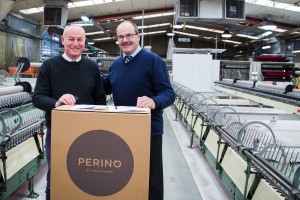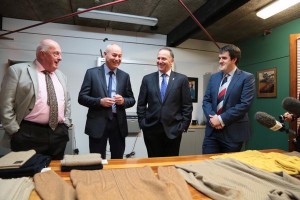Archives
About 1800 possum furs likely involved in Gore fur theft
It takes 18 possums to get one kilogram of fur.
That means it would take about 1800 possums to make 100kg – the amount of fur that was believed to have been stolen from woolbuyers Brian Redding Ltd in Gore at the weekend.
Sergeant Greg Ballantyne said police had received a report on Monday that someone had entered the Aparima Street premises overnight on Sunday and taken 100kg of possum fur valued at about $11,000.
Brian Redding owner Jim Patterson declined to comment on the stolen fur.
“I’m not very happy about it and I don’t want to comment about it in the meantime.
“There’s more to the story,” Patterson said.
Bob McLean, of McLean Wools, said possum fur was hard to identify because of the lack of branding and it was likely that whoever stole it would be selling it in small lots.
“If someone turned up with 100kg of possum fur then we’d be asking some questions,” he said.
One bale of possum fur was worth $13,000 to $14,000, McLean said.
There was strong demand for possum fur which had been driven by the tourism industry and it was used to make socks, gloves, and mixed with merino wool to make jerseys, he said. MORE>>>
Duchess of Cambridge takes to the slopes wearing ultra-luxurious mittens lined in POSSUM fur
Lined with possum, a rather adorable looking Australasian marsupial, they are said to be among the most exclusive ski mittens in the world. And costing an eye-watering £295 a pair, it’s little wonder they are. Made by niche British firm alexski, the black leather mittens sported by the Duchess of Cambridge on her family holiday to the French Alps were bought for her by her mother Carole Middleton as a gift. Indeed, Mrs Middleton was so enamoured of her purchase that she bought a matching pair in red for her other daughter, Pippa, also a keen skier.
The firm’s owner, Alexandra Bennett, couldn’t hide her delight yesterday when she saw Kate had been photographed in one of her products. She insisted that the use of possum fur, which she imports from Christchurch, New Zealand, and arrives in bales of raw, tanned skins, is not as cruel as it might sound. ‘They are considered vermin out there,’ she said.
Possums are a small to medium-sized marsupial which were introduced to New Zealand in the mid-1800s by European settlers in an attempt to establish a fur industry. With no native predators, its numbers have risen to levels where it is considered a serious pest. Attempts to eradicate them have reduced numbers by half to around 30 million animals and since 1996 fur from wild-caught possum has been used in clothing. MORE >>>
Prince Charles given fairy dust and possum poncho by Kiwis
Prince Charles left his latest tour of New Zealand with a bit of magic in his pocket after one royalist gave him a packet of fairy dust.
Charles was given the packet of fairy dust by a member of the public during his trip down under in November 2015.
Each year the royal family publishes a list of the gifts received in the United Kingdom and around the world.
The children’s gifts included a blended woollen possum fibre poncho for Princess Charlotte and a woollen possum fibre tank top for her older brother from the Speaker of the House. More >>>
We are fur – Member of the Month: New Zealand Fur Council
International Fur Federation features the New Zealand Fur Council on its we are fur website December 2015
Located in New Zealand. Members include trappers, fur collectors, yarn spinners and knitters from throughout the New Zealand textile industry supply chain.
The New Zealand Fur Council was established to act as one voice for the wider possum-fur/skin industry. Its prime purpose is to promote industry growth through continued access to raw materials, which are a by product of ongoing conservation programs to protect New Zealand fauna, flora and native wild life species such as the iconic New Zealand Kiwi.
Over the last year the NZ Fur council has been working closely with NEW ZEALAND’S DEPARTMENT OF CONSERVATION. The outcome of this collaboration was a signed Memorandum of understanding to enhance conservation outcomes through increased trapping of possums for natural heritage protection. The outcome for the industry is increased volumes of raw material to meet increasing demand for Possum apparel and accessories. MORE>>>
PM visits Woolyarns
Rt Hon John Key visited the Woolyarns factory in Lower Hutt with local MP Christopher Bishop today. The Prime Minister tweeted photos of the visit and described Woolyarns as a leading manufacturer in the area. MORE>>>
Ninety-plus students for annual ‘Project Possum’ training
More than 90 students from around Northland are expected to gather near Kaikohe over the next week to gain hands-on knowledge of possum trapping, fur and pelt recovery as ‘Project Possum’ enters its fifth year.
The chair of the Northland Regional Council’s Environmental Management Committee, Joe Carr, says Project Possum training is run under the umbrella of the Enviroschools Programme, which is funded in Northland by the council.
Councillor Carr, who represents the council’s Hokianga-Kaikohe constituency, says about 350, mainly young Northlanders have undertaken Project Possum training since 2011. More>>>
Agreement delight for possum fur dealers
An agreement between the Conservation Department and Fur Council has been welcomed by veteran Wanganui possum fur and skin buyer Colin Cox.
The memorandum of understanding signed last week will make it easier for possum hunters and trappers accredited by the New Zealand Fur Council to work on conservation land. More>>>
TV3 News – Fur agreement a win-win – but not for possums
A new agreement between the Department of Conservation (DOC) and the New Zealand Fur Council (NZFC) is a win-win for all, except for possums.
The new memorandum of understanding (MOU) signed today will make it easier for NZFC-accredited hunters and trappers to gain access to public conservation land for fur recovery operations.
Both DOC and NZFC say the agreement will allow New Zealand’s possum fur industry to grow as well as aid conservation benefits. MORE >>>
Agreement a win-win – except for possums

Chairperson of the New Zealand Fur Council Neil Mackie and Department of Conservation Director-General Lou Sanson signing MOU at Woolyarns NZ.
Greater conservation and economic benefits will follow an agreement signed by the Department of Conservation (DOC) and New Zealand Fur Council (NZFC) today.
DOC already works with individuals who wish to hunt and trap on conservation land, but this Memorandum of Understanding (MOU) with the collective voice of the possum fur industry will make it easier for Fur Council accredited hunters and trappers across the country to gain access to public conservation land for fur recovery operations.
“We need more possum fur to increase the market size for New Zealand’s unique blended Brushtail possum yarns and garments,” says Neil Mackie, chairman of the New Zealand Fur Council.
“Many of the possums in our country are on public conservation land, so the MOU will allow trappers to access more fur, increase the market, and better target ecologically important areas.”
Lou Sanson, Director General of Conservation says: “The agreement is a pragmatic way to broaden the battle against a pest that preys on native wildlife and eats an estimated 21,000 tonnes of bush a night. We have to prioritise our possum control operations on the areas where the forests or wildlife are most vulnerable but there are millions of hectares of bush that we simply can’t get to.
“By encouraging fur trappers into these areas we can deliver results for the taxpayer, the fur industry, and conservation. Our research shows that having trappers knocking down possum numbers in the buffer zones around our own targeted pest control projects can delay possum re-invasion by two to three years.
“DOC spends more than $10 million a year on possum control so any delay in re-invasion will give New Zealanders’ more bang for their buck – as well as precious extra time for our native plants and birds to recover. The fact that New Zealand businesses and local communities will also benefit from enabling more fur recovery operations is the icing on the cake.”
Mackie says there is unfulfilled international market demand for blended Brushtail products.
“Working alongside the Department of Conservation will be an important part of telling overseas consumers how possum fur products are environmentally and ethically sound. We’ve been delighted with DOC’s willingness to work with the trapping industry and look forward to a rewarding and ongoing relationship,” says Mackie.
As well having been seen on the fashion catwalks of Paris, in the increasingly trendy hand-knitting scene, blended Brushtail possum yarns are recognised as a special product he says.
Fur: has a new generation shrugged off the old stigma?
New statistics from the International Fur Federation suggest a once-reviled industry is thriving. Hannah Betts from the Telegraph explores the changing social attitudes to fur.
The fur industry, a phrase that used to have to be uttered sotto voce, has released figures to demonstrate that, far from being an object of collective scorn, fur is now positively a la mode. Not that this should come as much of a surprise. More >>>

